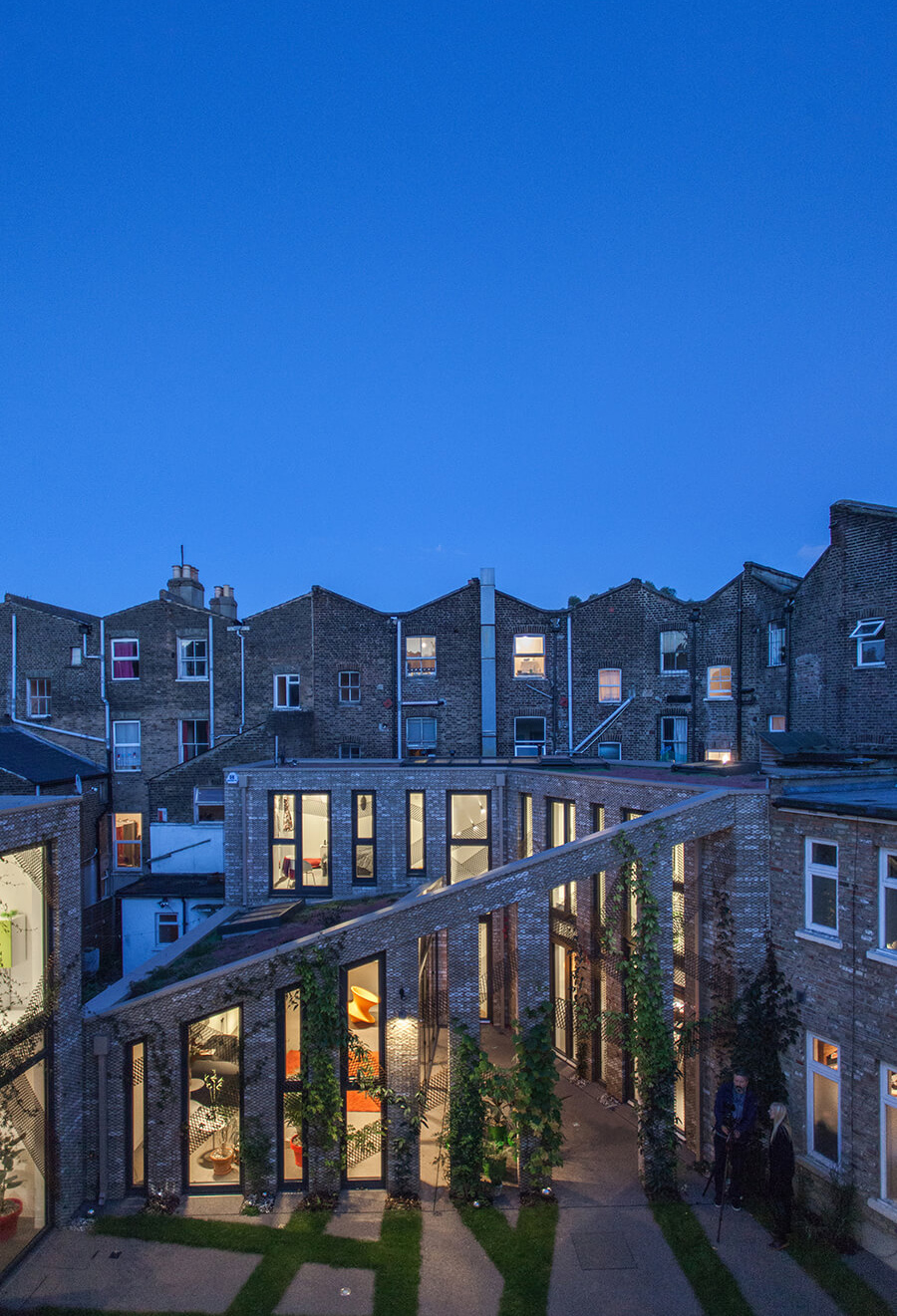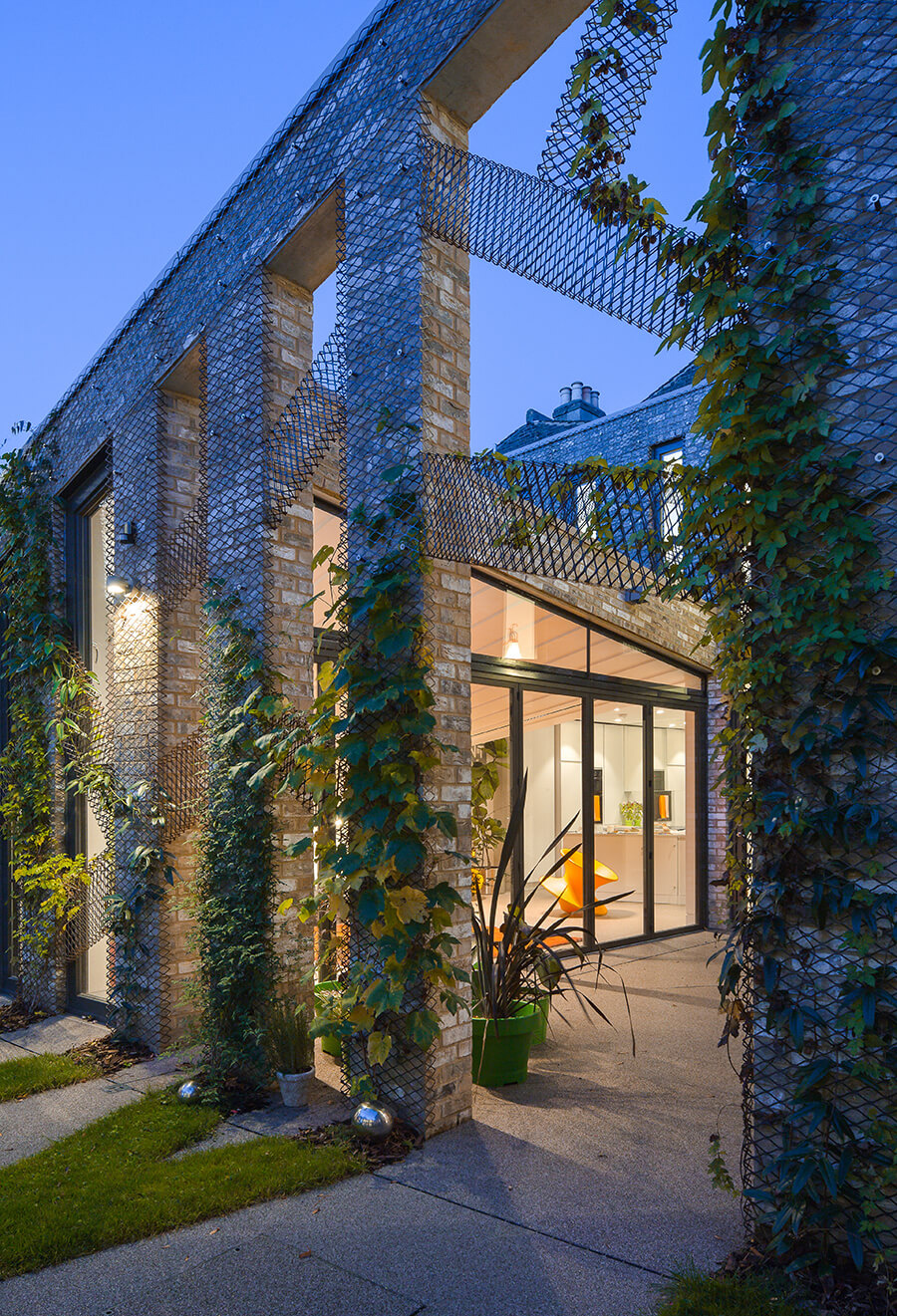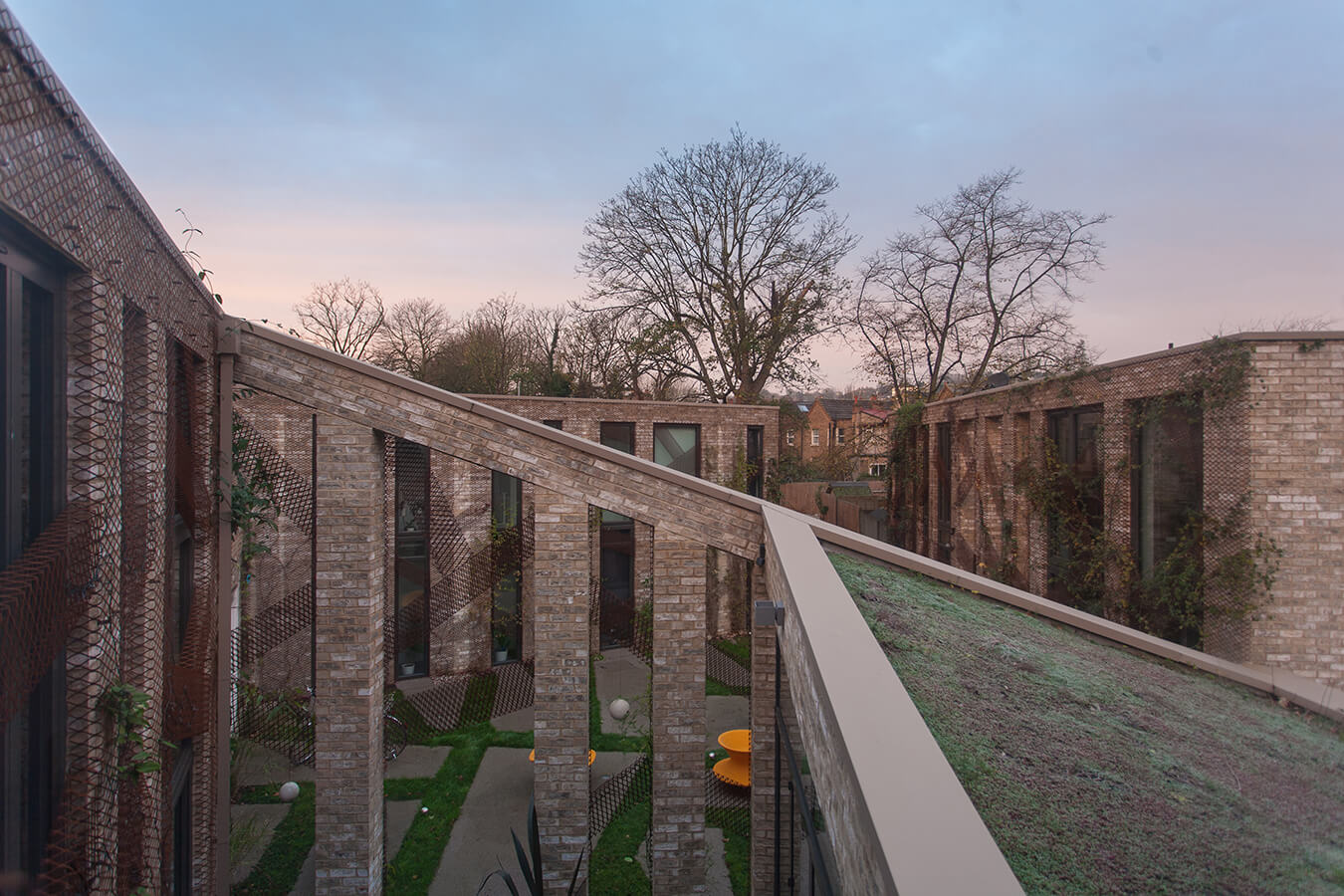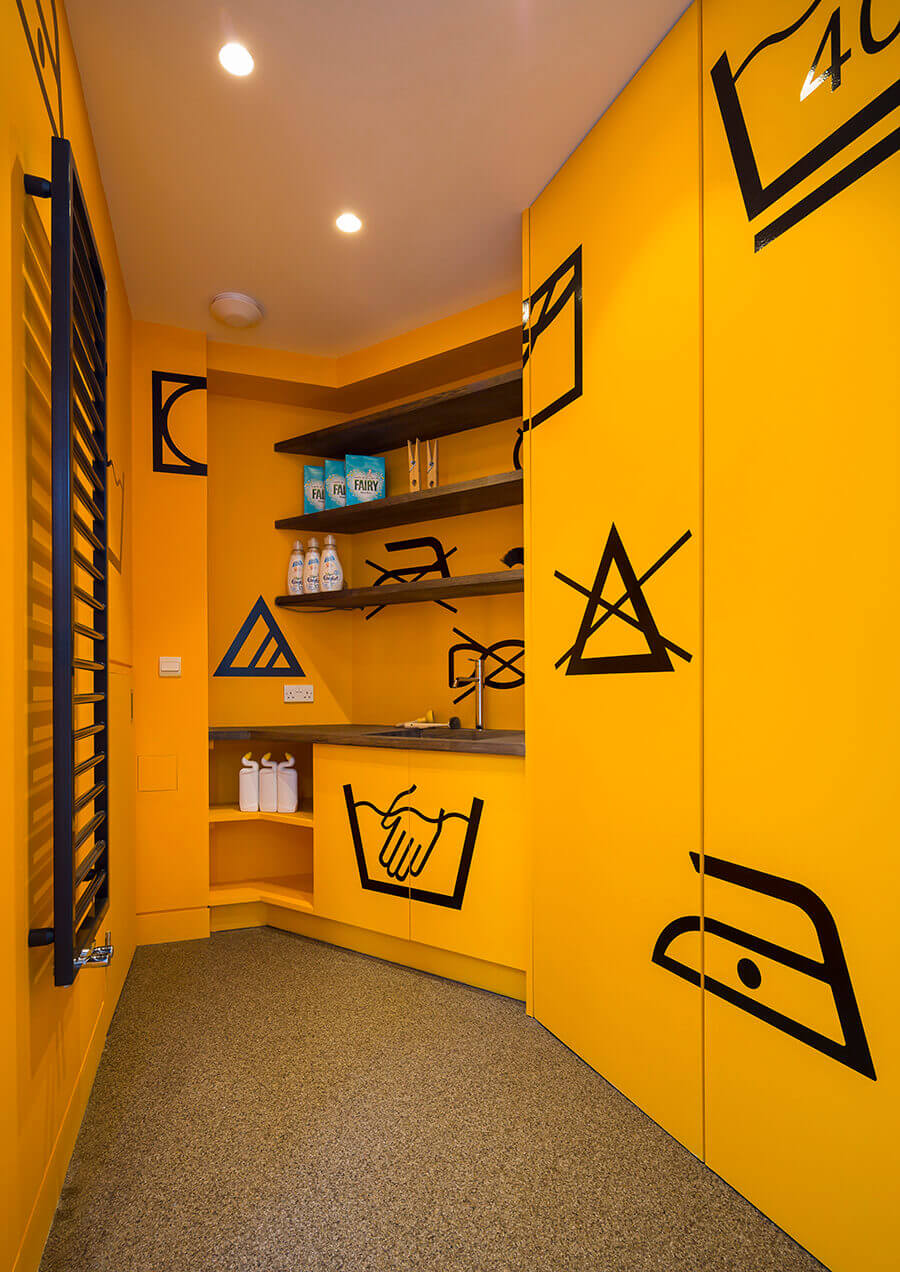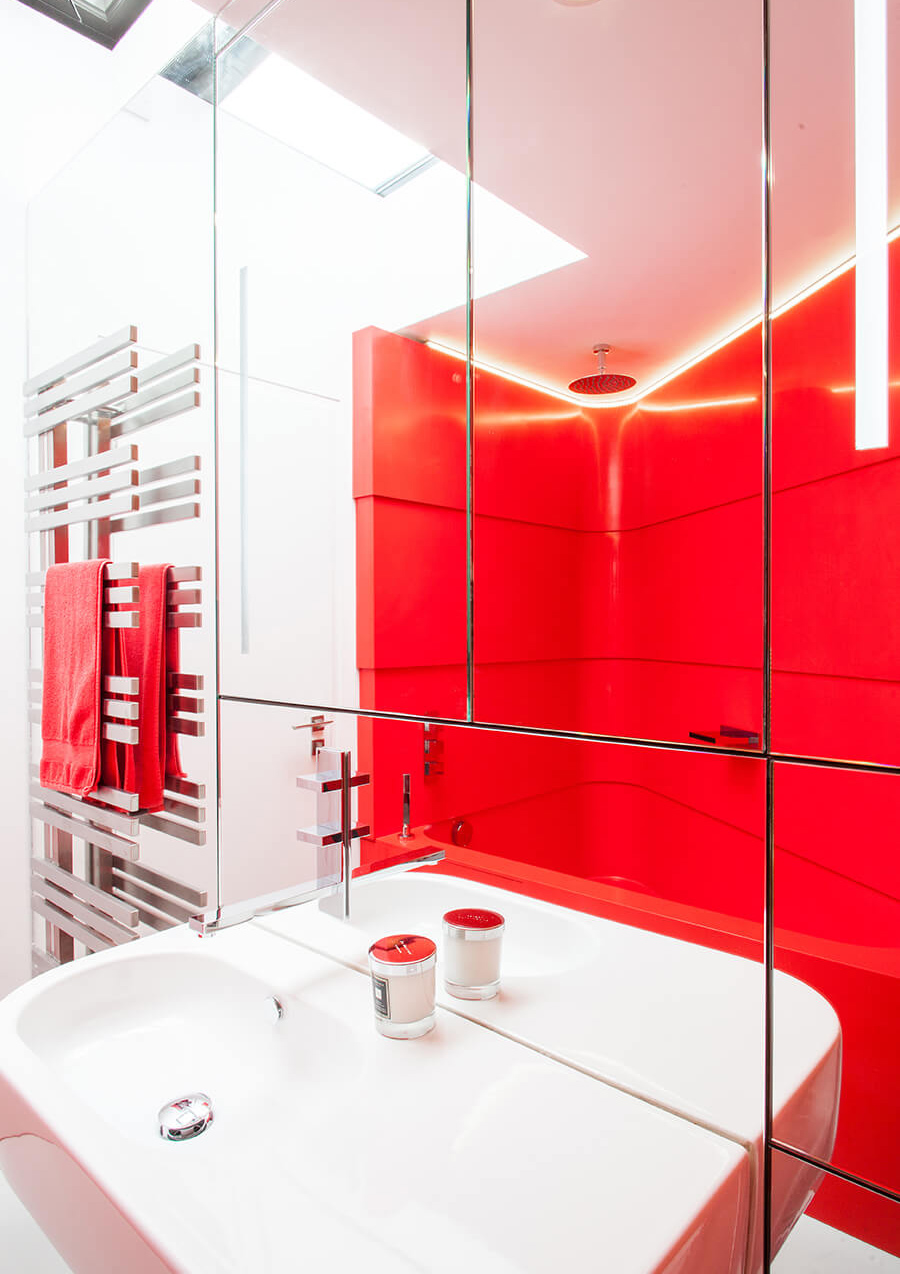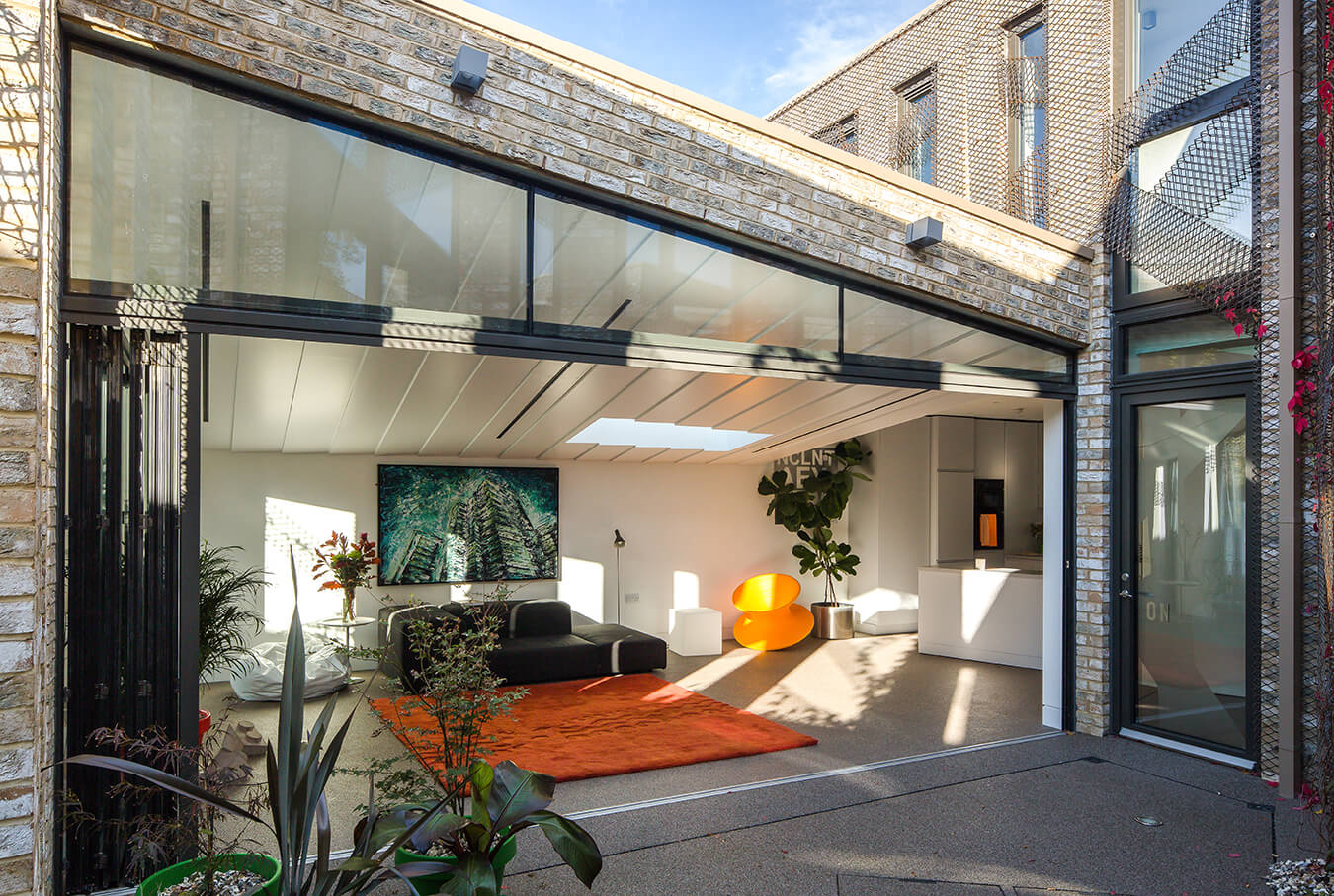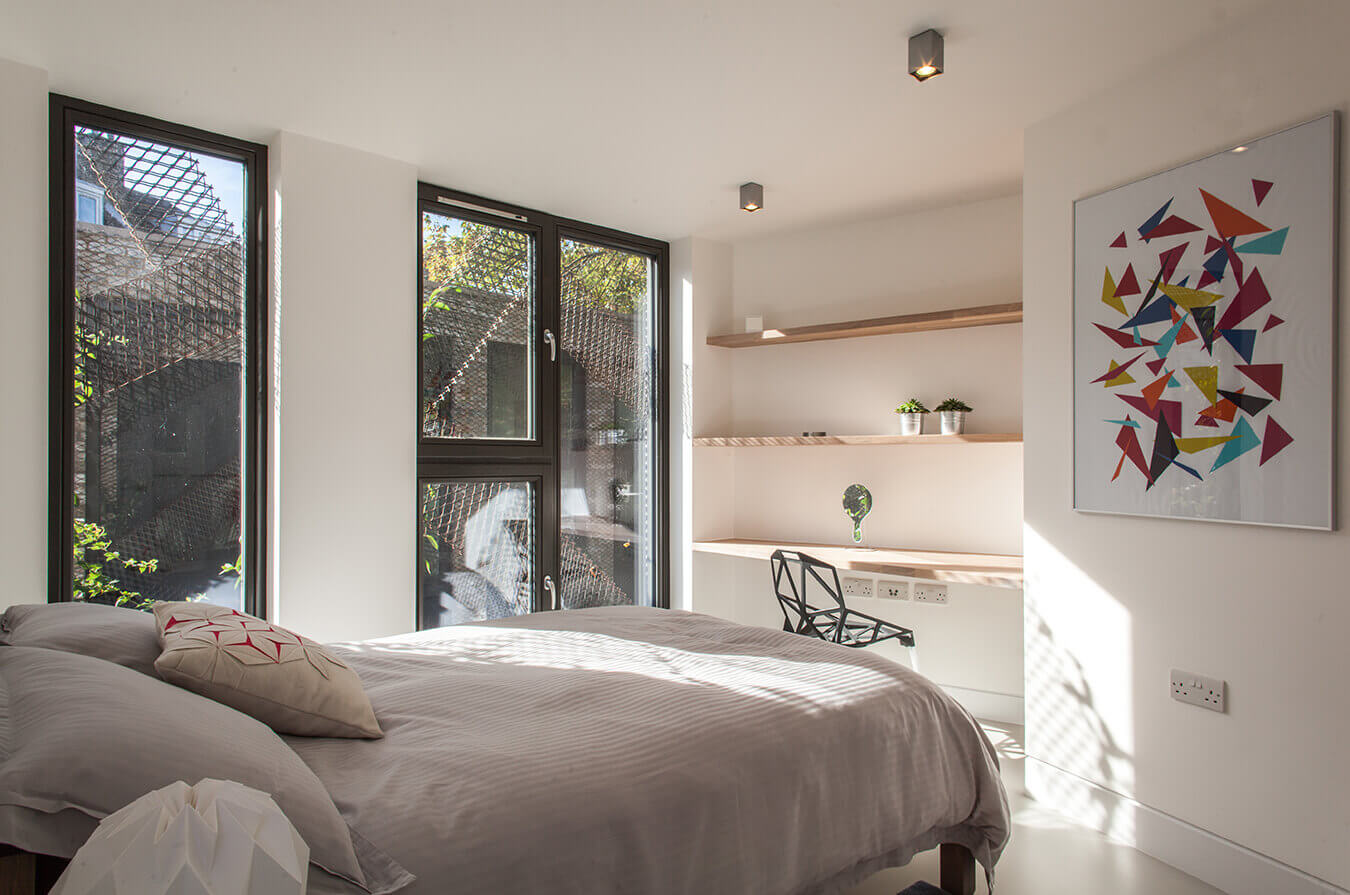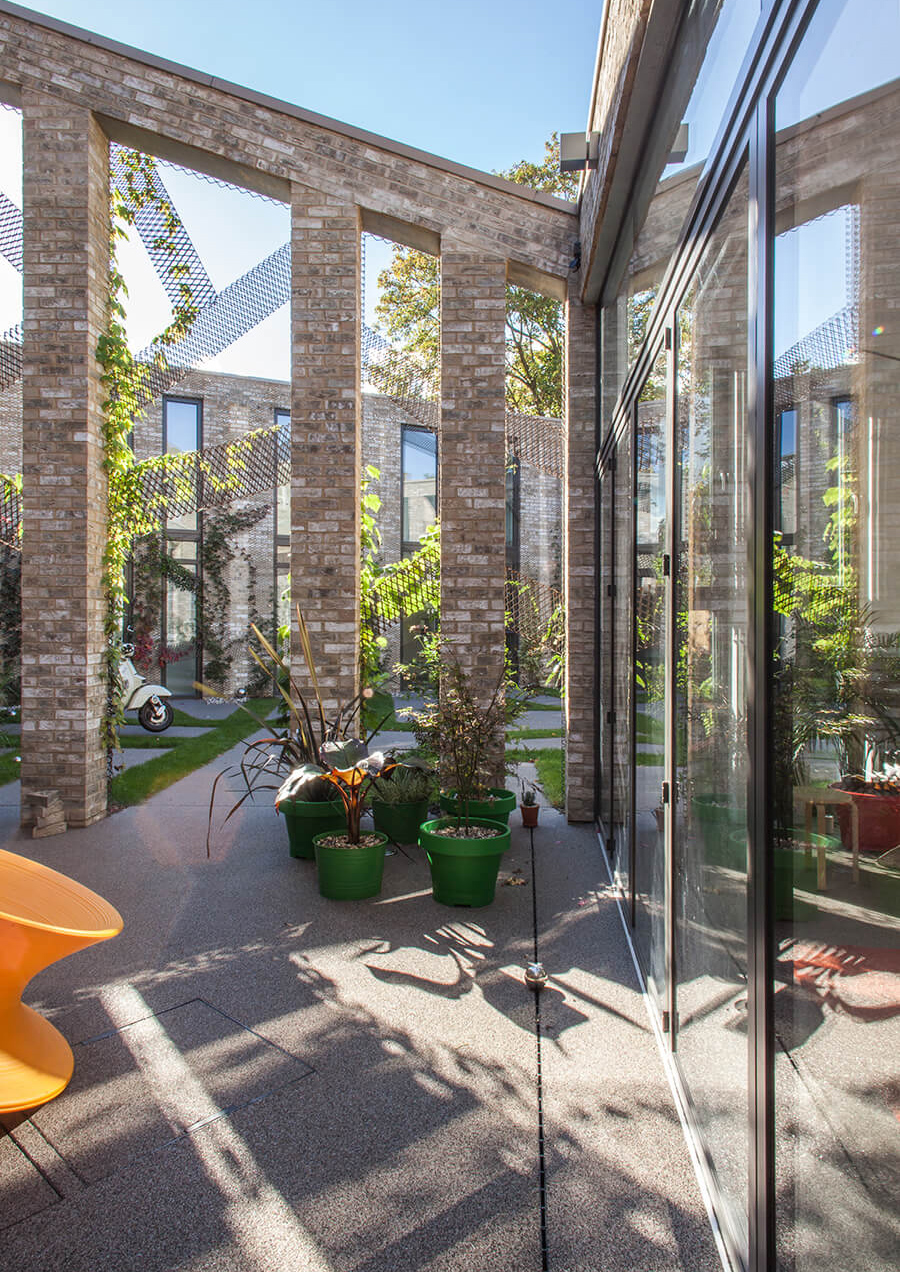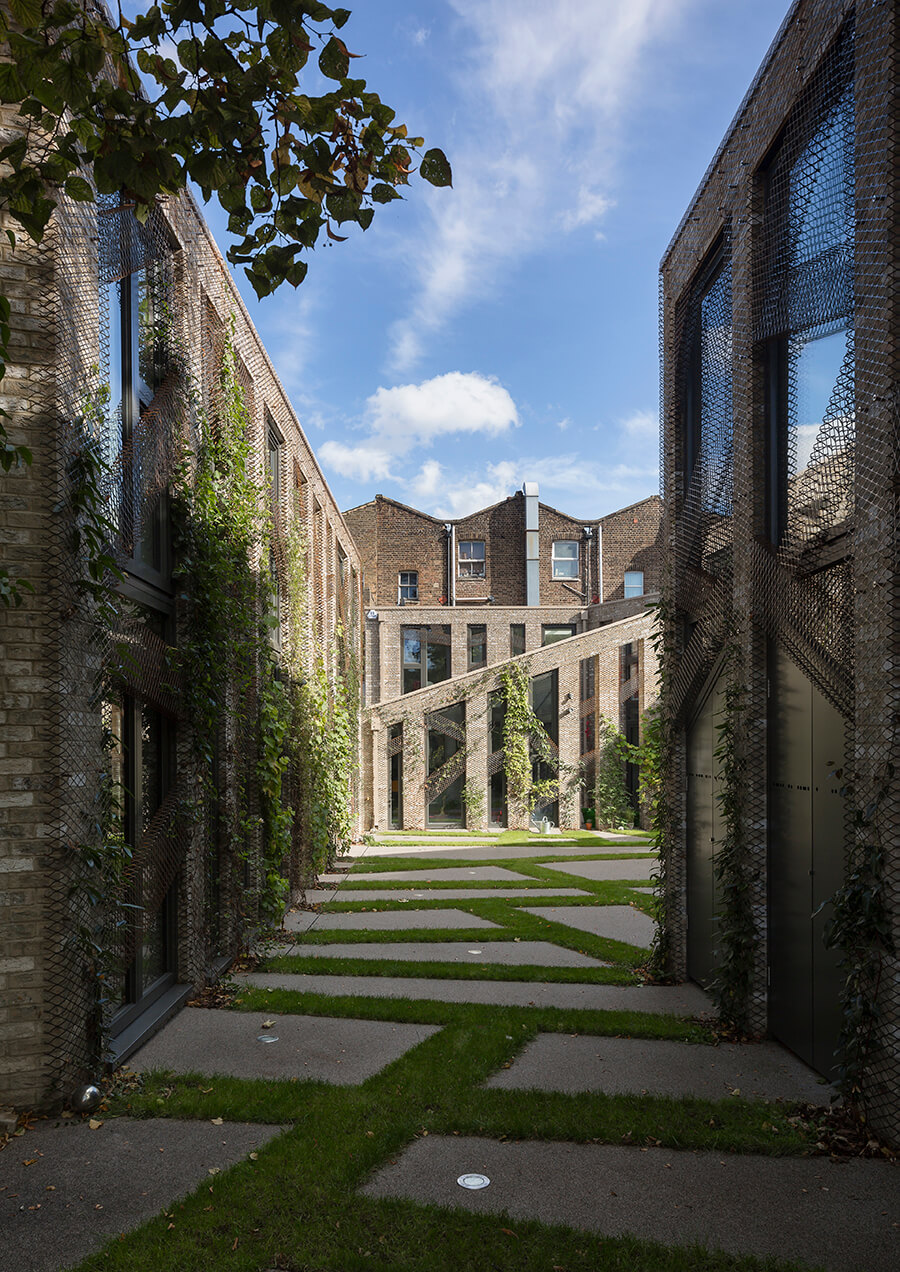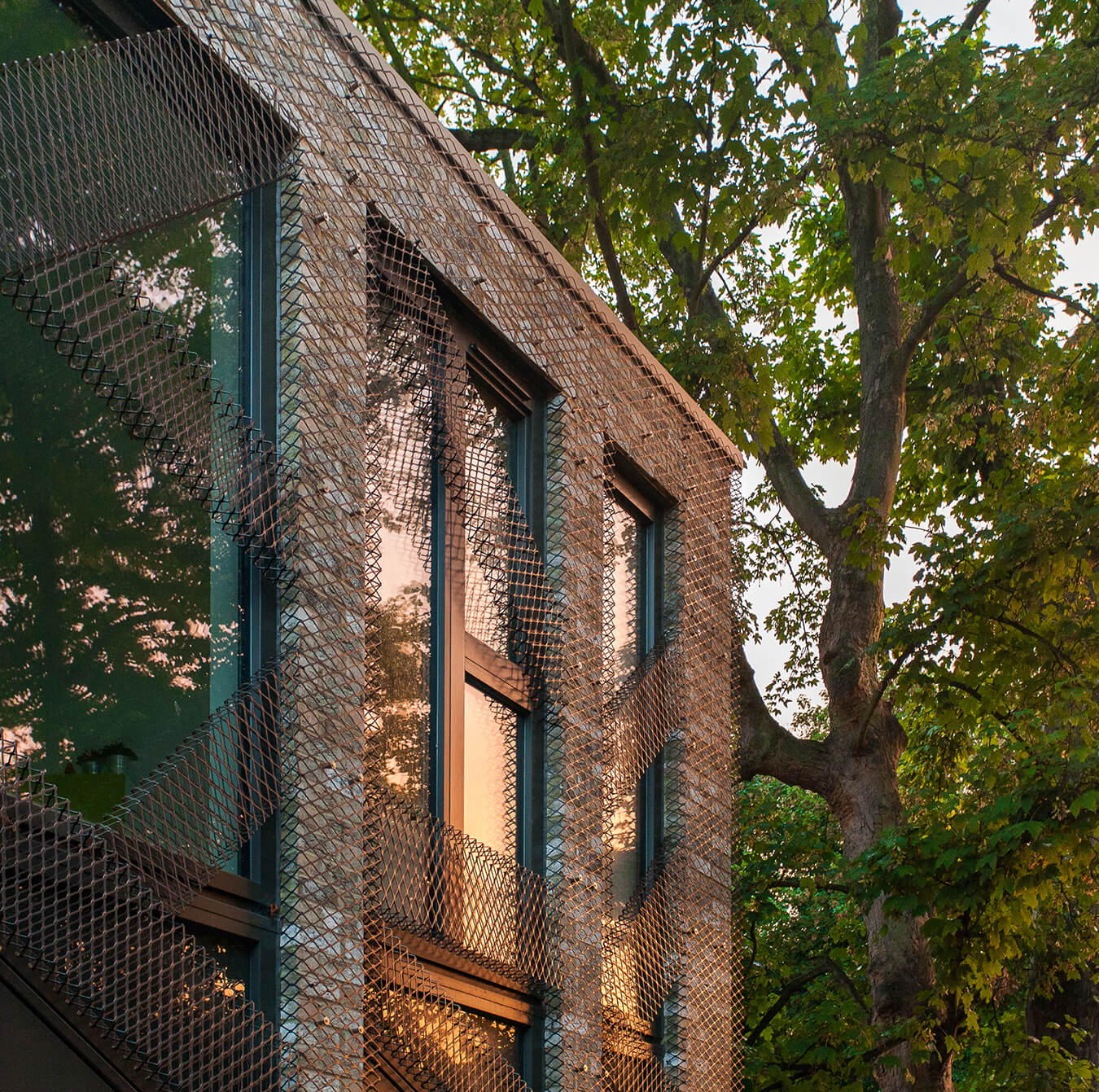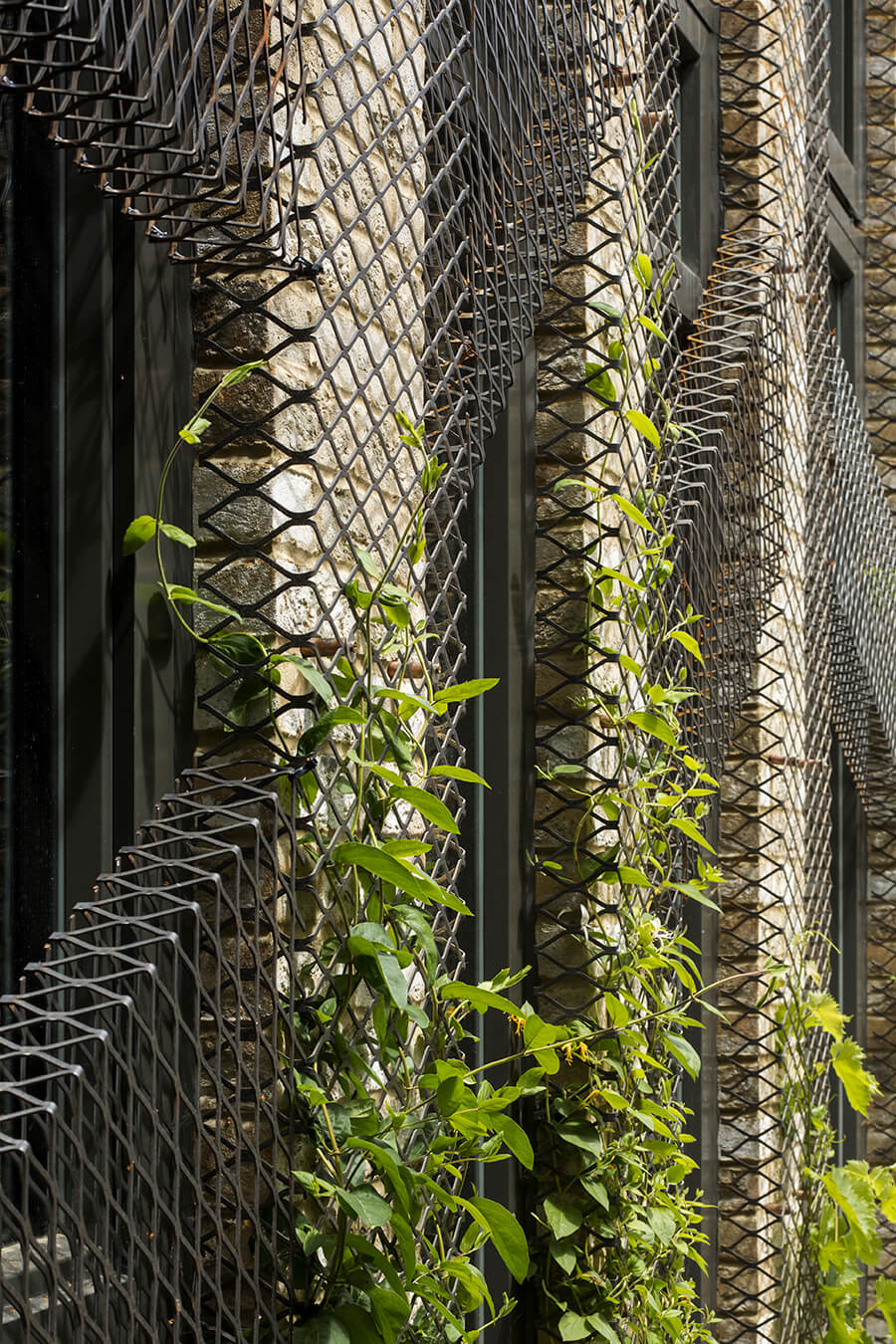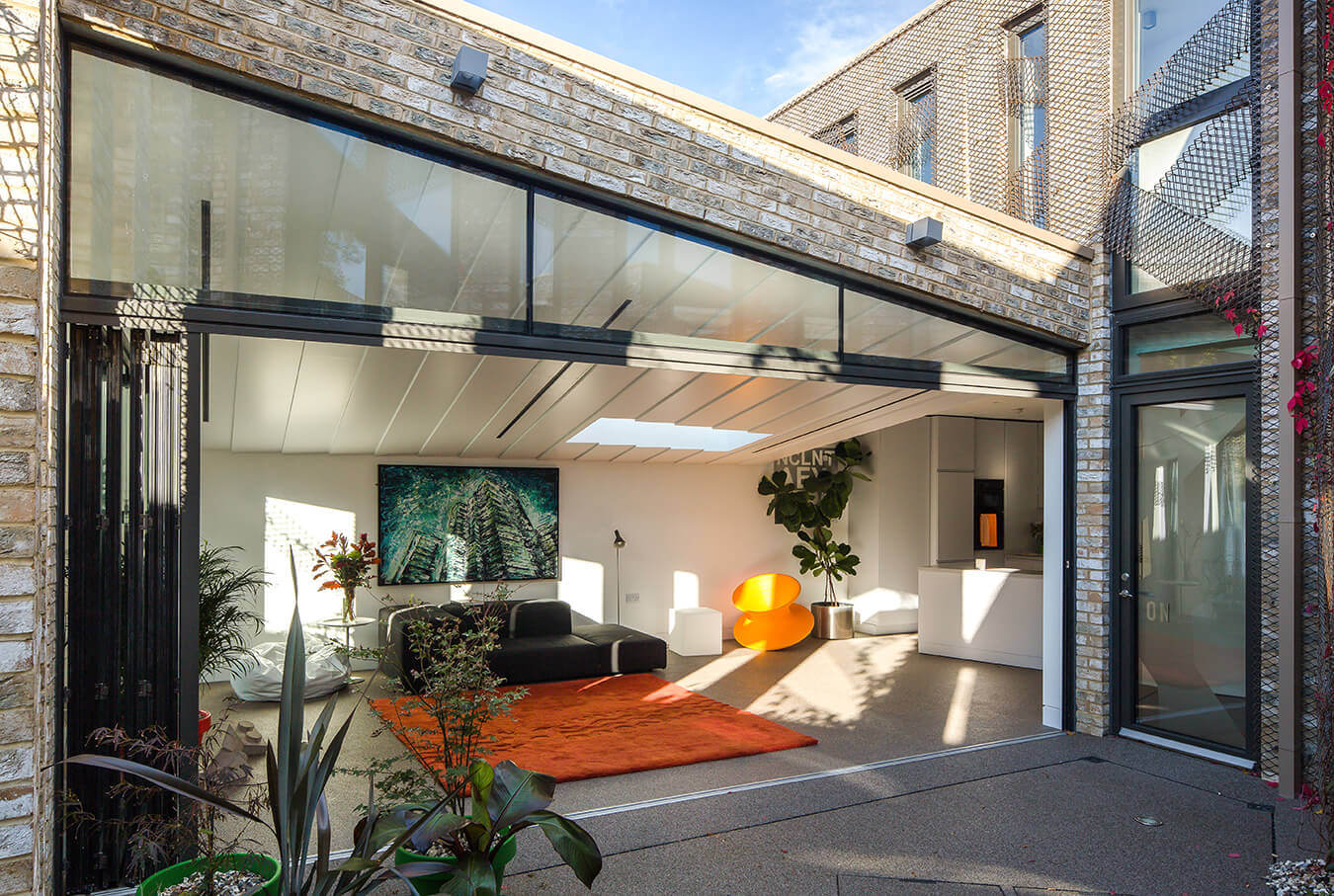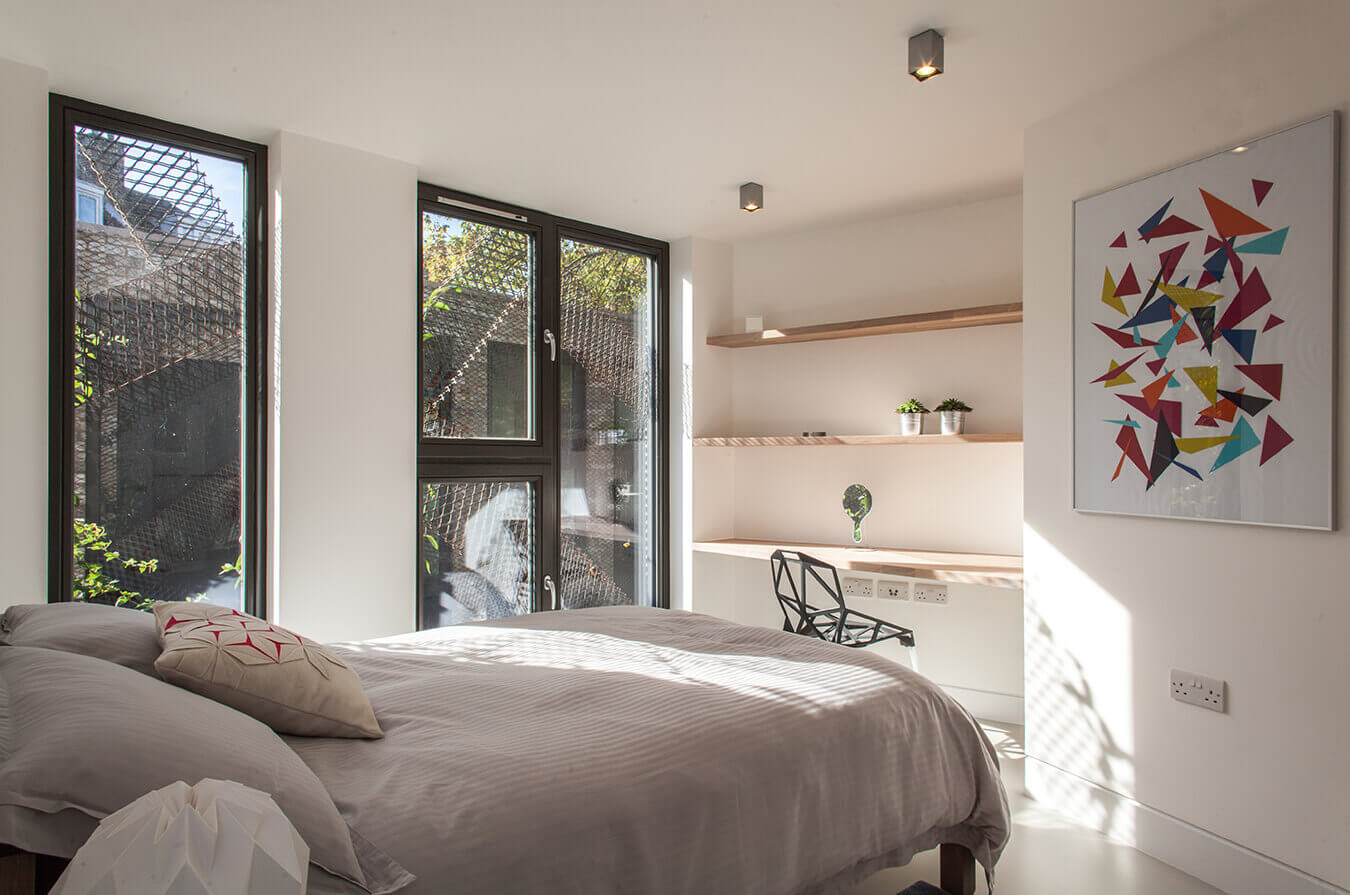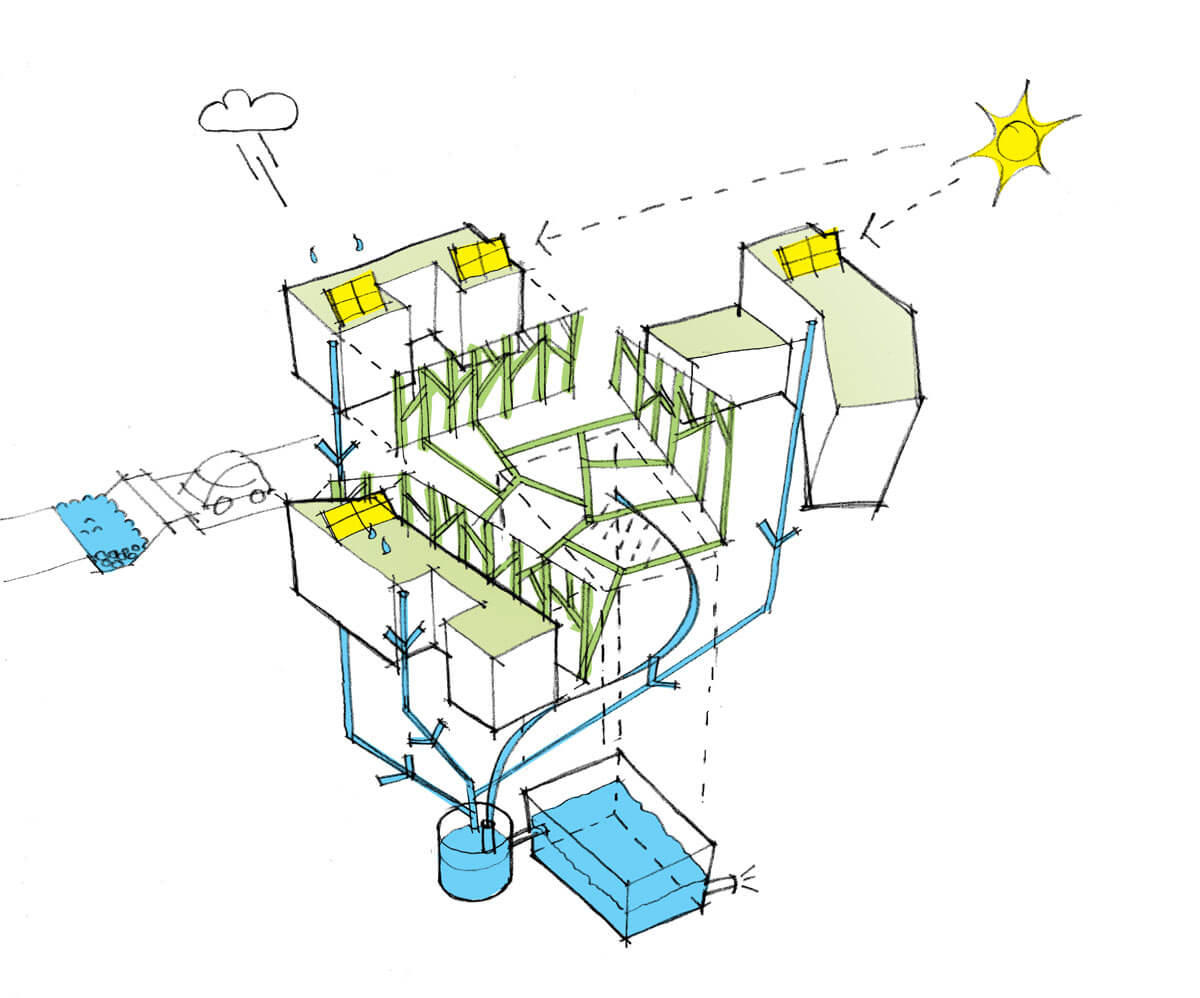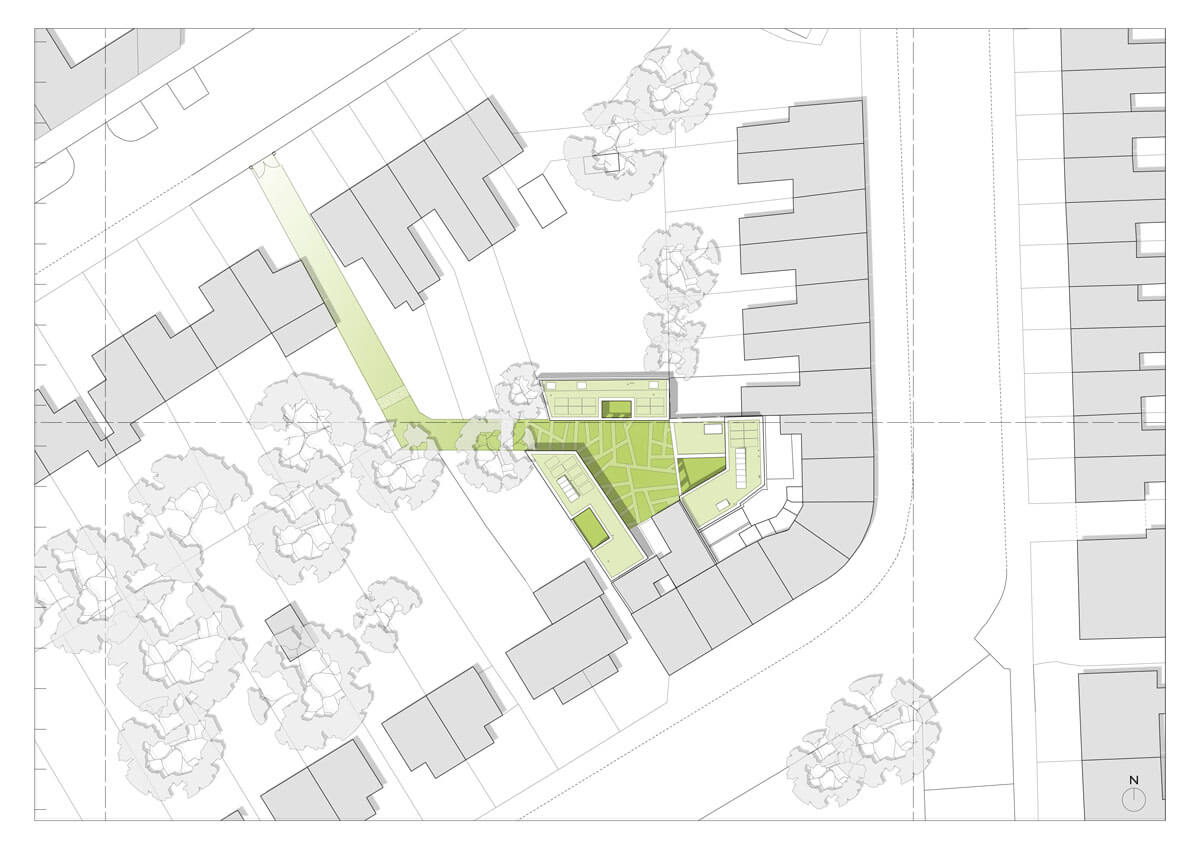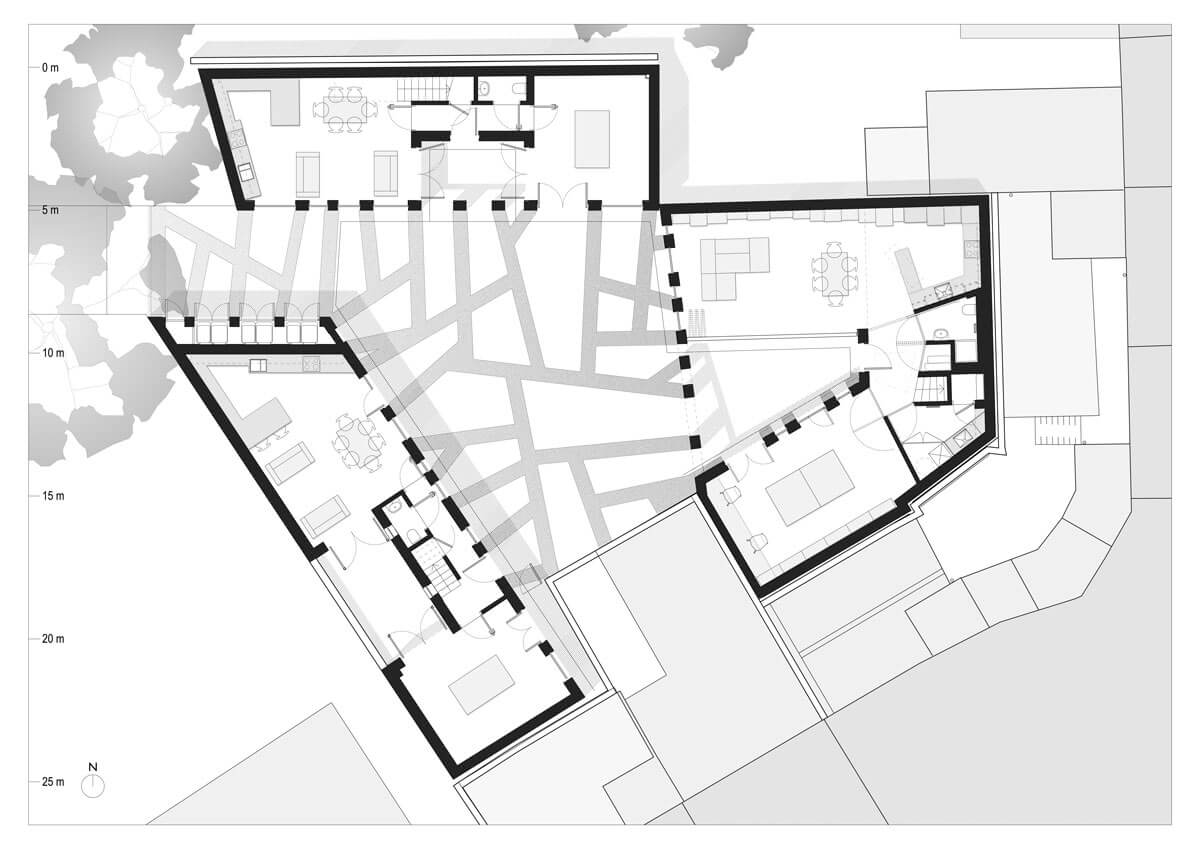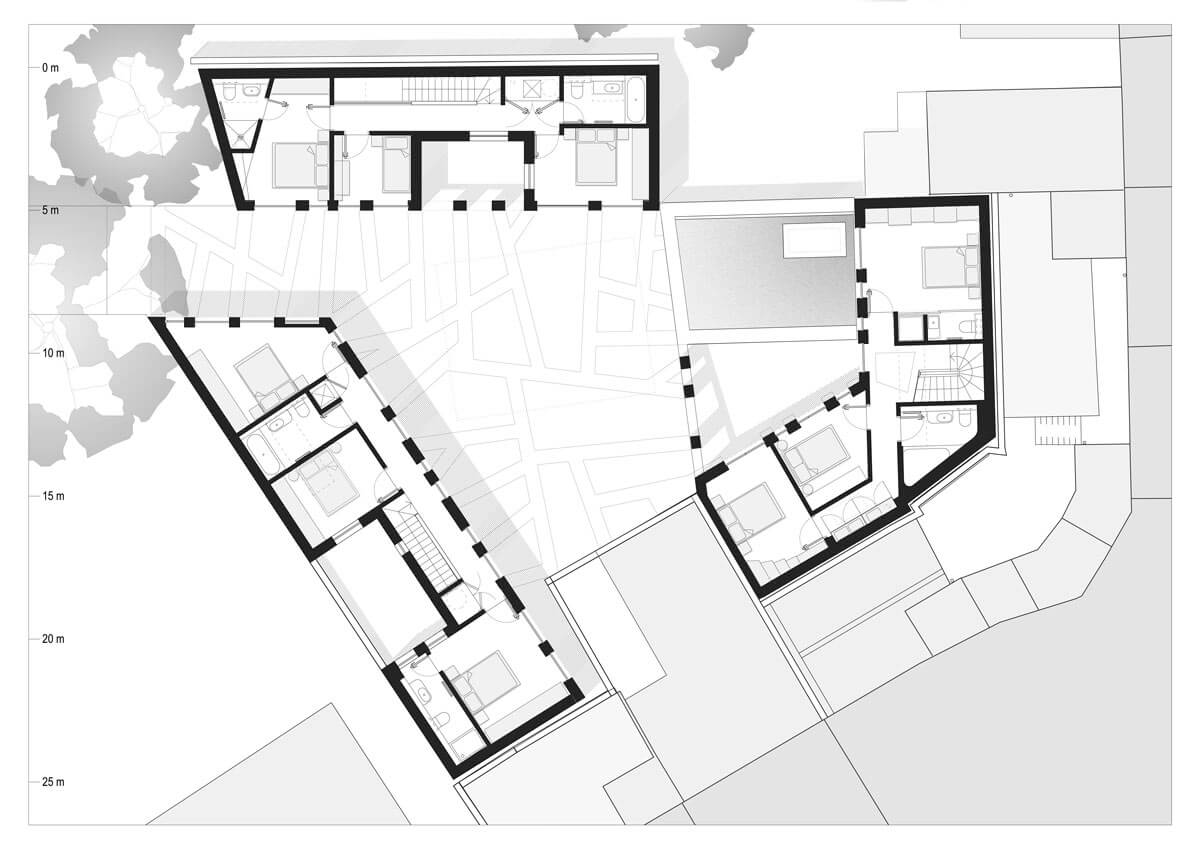Forest Mews / Stolon Studio
Forest Mews / Stolon Studio
Concept
The aim was to create an inspiring family home in which they could live and work, part-funded by the creation of two additional homes on the site, to overcome land costs. Having lived in what was formerly the only house in the mews, the clients wanted to preserve the sense of a woodland clearing as you enter the mews and to create two pleasant companions to their new home.
Description
The Mews is set behind gardens of Victorian houses on one side and surrounded by a parade of four-storey Victorian flats and shops on the other. The drive leads to a triangular opening that previously contained a house, derelict store and textile-print workshop.
Land-locked on all sides, the architects had the challenge of providing light to each room, without compromising privacy and outlook; in a scheme conversant with its patchwork context, constructed with the sensitivity which accompanies 32 Party Wall Awards, and delivered on an ambitious budget.
Each house is tailored to its position on the site, fashioned from the same building fabric, and gathered together using a common design thread. The buildings are set around and look into a shared central courtyard. A private courtyard forms the centre of each open plan ground floor, with living and studio spaces on either side. By providing each house with workspace, totalling the previous provision, a live-work community is created within the mews, connecting into the wider live-work community already established in Forest Hill.
The communal courtyard is landscaped with a geometric mix of resin-bound gravel and planting beds, connecting back to brick piers. The beds provide footholds from which climbing plants will grow, supported on a treillage mesh, which branches across the face of the buildings, tracing out the motif of the elevations and providing privacy and shade to occupants. The geometric pattern features in project graphics, textile-prints and also in the clients’ wedding rings.
The earthy tones of the exterior gravel finish continue throughout the internal ground floor. The stairs and first floor rise up in a lighter, smooth resin finish, marking the transition to the private bedrooms and glass lined bathrooms.
Level access is provided into the live and work part of each property. The interior colours provide visual legibility, and together with high levels of natural light and views of the planted amenity space, help to increase levels of well-being and happiness.
Atop pile foundations, ground beams and slabs, the brick cavity walls support sedum and wildflower roofs. The large two-storey triple-glazed window openings are framed by slender brick piers, which are braced by the construction of the first floor, and required an unorthodox sequencing of work.
The balance
As clients, they were conscious that the design and the budget had to work in unison. The constraint of an ambitious budget for the construction of three bespoke family homes in London, compelled the couple to find inventive ways to execute their design. Commercial flooring is used throughout, extending seamlessly between inside and out. Utilitarian steel handrails and balusters were blackened to add refinement. Agricultural steel mesh folded and cut to a dramatic pattern forms the treillage. Vinyl graphics and strong colour were used to add a playful touch to what could otherwise be a mundane laundry room.
The two-storey glazing is constructed without spandrel panels, using domestic sized composite timber/aluminium triple glazed windows from Olsen Windows, which at first floor are supported by the plywood deck, achieving a higher end appearance for less than £350 / sqm.
As architects designing three houses, Robert and Jessica have also pursued their love of affordable custom design to include not only the architecture and interiors, but also furniture, textiles, and products for the houses.
The project is finely balanced: there are common design features for economies of scale and procurement, and yet each house has it’s own individuality and character. House 3 has a more private feel with the courtyard on the west to ensure it would receive sun. House 2 contains a double height void above the stair. House 1 (the clients own) embraces the quirky angles that respond to the site and is filled with bespoke detailing.
The architects-cum-developers wanted to use their skills to demonstrate that beautiful bespoke homes can be affordable to build, inhabit, maintain, and full of character.
The process of searching and eventually finding a site they loved, but could only afford to share with others, cultured a personal and embracing approach to development which they believe may be applied to the wider house-building market and/or self-build model.
An inspiring place to live and work
The ambition was to create an inspiring place to live and work. In their previous home, the clients would often do work, either painting or sewing, choosing to be at the dining room table, as opposed to being isolated in a spare bedroom.
The plans evolved to overcome this overlap of activities by separating the functions, providing dedicated spaces, whilst maintaining a visual link. The sections were almost entirely informed by studying the daylight to its context and interiors.
Each house is approached via the shared courtyard. Central to each of the open plan ground floors is a semi-private outdoor room / courtyard. This loggia space is multifunctional, serving as a grand entrance porch, an external terrace, an extension to the living space and work space, and as an atrium to the surrounding rooms. The flying brick beams of houses 1 and 2, define the boundary of the private and communal space, creating a clear gateway without barriers.
Atypical to a traditional mews, the designs are light and airy, with a high proportion of glazing to solid, carefully designed in combination with internal planning, to provide privacy in places and openness in others, to encourage a sense of community. The pale ‘stock’ bricks and glazing reflect light into the communal courtyard even during winter months. The hard surfaces will be slowly tempered and softened as the climbers establish over the treillage covering the bricks.
Why brick
The architects, Stolon Studio used brick for this design to compliment the context, and to provide a familiar material for progressive and inventive design. The houses in the mews share a courtyard garden, promoting sociable interaction between the residents.
The light coloured brick reflects the light into the shared courtyard, and also creates a robust backdrop to the climbing plants and vertical gardens.



